Finding the right contraception for you can be real a minefield. There are many types of birth control out there and, in truth, many women don’t know where to start. From hormonal birth control to non-hormonal choices, there is a lot to consider.
So, how effective is birth control when it comes down to it? Let’s take a quick look at some of the different types of birth control and how much protection you get from each of them. We’ll also look at birth control side effects, to give all of the information you need to make the right choice for you.
What is Birth Control & How Does it Work?

Birth control (or contraception) is the collective name given to a range of techniques that prevent unwanted pregnancies. Around 62% of women of “reproductive age” currently use some form of birth control, according to a report from the Centers for Disease Control and Prevention, National Center for Health Statistics.[1] Surprisingly, the most common types of birth control are the pill and female sterilization.
There are many forms of birth control out there and each one works in a different way. Some methods, such as the contraceptive pill or the implant, use hormones to control the fertility of a woman. Other more holistic forms of birth control, such as the pull-out method, try to prevent pregnancy by stopping the sperm from entering the woman through the vagina. In this guide, we will take a look at the methods as well as the birth control side effects of which you should be aware.
How Effective is Birth Control?

There’s one burning question here: How effective is birth control? Thanks to the marvels of modern medicine, most of the common forms of contraception are more than 90% effective when used perfectly.[2] However, the true effectiveness of each form of birth control that you use depends on a range of different variables, from your fertility to hormones.
There are two primary factors to be considered here. The first is which type of birth control you choose to use. Each method and treatment has its own effectiveness level, which we will delve into deeper shortly. The second factor is how vigilant you are when it comes to using your chosen birth control method. For example, should a woman forget to take the contraceptive pill at the right time of day, her chances of pregnancy will increase.
What is “Perfect Use” and “Typical Use”?

Now that we know the basics, let’s get down to the details. When we pose the question “how effective is birth control,” there’s one thing that we cannot overlook. The way in which you use your contraception will directly impact how effective it is and, ultimately, your chances of becoming pregnant.
There are two terms that you should know here – perfect use and typical use. These phrases are used by medical professionals to identify how each form of contraception is being taken or used. Here’s a quick rundown of each.
- Perfect Use: If you follow the instructions exactly, you should find that you adhere to the perfect use guidelines. This is the term given when a woman does everything correctly. For example, if there are rules on the contraception packet, she will read them and follow them without fail. When this method is employed, the effectiveness of the birth control should be at its absolute highest, as told by the experts.
- Typical Use: On the other hand, typical use allows for some variables. Since we all make mistakes, the chances of us taking birth control perfectly may be slim. This type of usage is when a woman fails to follow the guidelines exactly while still using the contraception regularly. For example, you may find that you forget to take your contraceptive pill one day but make up for it the next day. This type of usage will lower the effectiveness of
the contraception .
Many people want one conclusive answer when they ask “how effective is birth control?” However, the truth of the matter is that it depends on the way in which you use it. Of course, you should always try to follow the directions as correctly as possible.
Different Types of Birth Control: How Effective is Each Option?
Many people ask the question: How effective is birth control? However, the question that they should be asking is: How effective is each different type of birth control? The level of protection that you get is dependent on the contraception that you choose to use. With that in mind, let’s take a look at the most common types of birth control and see how effective each one is when you take it either perfectly or typically.
Birth Control Pills
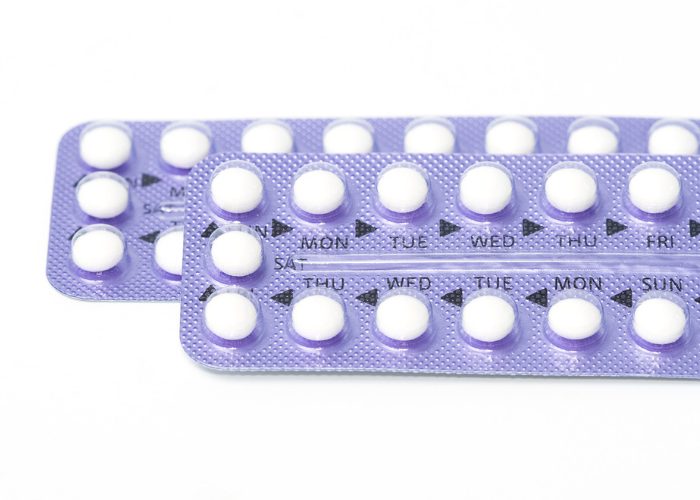
With 28% of women who take birth control using the pill, this is one of the most common methods of preventing pregnancy.[3] However, it’s important to note that there are many different types of pill out there, each of which has a unique chemical structure. When choosing which one is right for you, you need to speak to a doctor and take their advice.
How effective is birth control in pill form?
- Perfect use: 99%
- Typical use: 91%
Birth control pills are around 99% effective when taken perfectly, according to statistics from Planned Parenthood.[4] The fact is that many women actually miss pills on a regular or infrequent basis, so the actual statistic is more like 91%.
What is it?
Birth control pills are the collective name for a group of hormone medication that women can choose to take. Women should take one pill per day, usually at the same time each day.
How it works
These pills release specific hormones in the body which prevent the full ovulation from taking place. That means that the woman’s body does not release an egg at all. Should sperm enter the body through the cervix, there will be no egg there for it to fertilize.
Side effects
The pill may cause some women to see a change in their libido, feel nauseous, have sore breasts, and get regular headaches. Should you find that the birth control side effects are extremely severe, talk to your doctor.
How long does it take to work?
The birth control pill is a long-term method that many women choose to use. When you first start taking birth control pills, you need to use another form of protection for at least seven days. Up until that point, you will not get the protection from pregnancy.
How much does it cost?
Between $0 and $50 per month.
Diaphragm
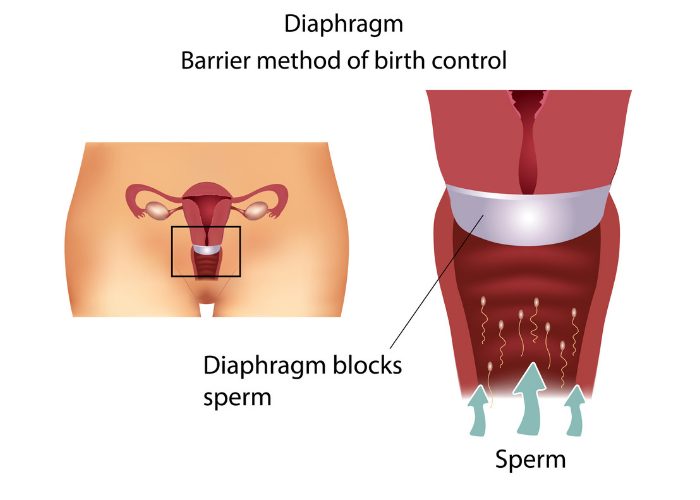
Should you wish to opt for a non-hormonal birth control solution, the diaphragm could be it. You only need to use this method when you plan to have sex, which means that it should not impose on your life in any other way.
How effective is birth control in diaphragm form?
- Perfect use: 94%
- Typical use: 88%
To answer this question, we need to ask another question. How effective is birth control when it is non-hormonal? The truth is that these options are less effective than hormone-based products. The diaphragm is 94% effective when used perfectly and around 88% effective when used typically.
What is it?
The diaphragm is a non-hormonal solution to your birth control. It is a flexible cup that you put inside your vagina before having sexual intercourse.
How it works
The physical material prevents the sperm from getting into your cervix and is used to prevent pregnancy. You can make your diaphragm more effective by using spermicide, i.e. a chemical that kills sperm, on it before usage.
Side effects
The side effects of using a diaphragm are significantly lower than hormonal birth control side effects. However, some women find that it is hard to put the diaphragm in correctly and may find it uncomfortable. Spermicide also can have side effects including irritation to the genital area, so be sure to do your research beforehand.
How long does it take to work?
One of the biggest advantages of using diaphragms is that they work right away. The moment that you put the birth control in correctly, you have a level of protection from pregnancy. You may also want to use other forms of contraception to be extra safe.
How much does it cost?
Between $0 and $75 per year. Plus around $15 for spermicide.
Condoms

Protecting you against both STDs and unwanted pregnancies, condoms tend to be a popular choice of contraception. The former advantage means that you can take care of your sexual health in the long run.
How effective is birth control in condom form?
- Perfect use: 98%
- Typical use: 85%
When you use a condom perfectly, it is 98% effective against an unwanted pregnancy, according to Planned Parenthood.[5] Of course, not everyone uses condoms right all of the time, which means that they are actually around 85% effective.
What is it?
Usually made of latex, condoms are essentially pouches that are put on an erect penis. During the course of sex, they collect the semen that comes out of the man’s penis and prevent it from entering the woman. There are also non-latex condoms available for people with latex allergies, such as
polyurethane condoms.
How it works
Condoms completely cover the penis when it is erect. When the man ejaculates, it also collects the sperm inside it. That means that the sperm never enters the woman’s cervix and can therefore never connect with the egg and fertilize it.
Side effects
Unless you have an unfortunate latex or plastic allergy, there aren’t any medical side effects of using a condom. Most birth control side effects come from the hormones in them and, since there are none, you shouldn’t experience any.
How long does it take to work?
Much like the diaphragm, you will find that the condom works right away. Before you have sex, you just need to make sure that the man puts it on his penis. Of course, it’s important that the condom is used correctly.
How much does it cost?
Between $0 and $2 per condom.
Arm Implant / Contraceptive Implant

Looking for a hormonal birth control solution that you don’t have to take every single day? You might just have found it. The arm implant – also known as the contraceptive implant – is an increasingly popular way to prevent pregnancy with minimal fuss.
How effective is birth control in the arm?
- All use: 99%
So, how effective is birth control in the arm? The implant may be one of the best birth control methods since it is more than 99% effective at preventing pregnancies. Since there is no way that you cannot use this method perfectly, that statistic remains the same for all women.
What is it?
The arm implant is a small rod that a doctor or nurse will put into your arm. You should not notice it’s there once it has been fitted. It releases hormones into your bloodstream at a steady rate over time.
How it works
The hormones in the arm implant are similar to those found in the contraceptive pill. When they are released into your body, they prevent ovulation, meaning no egg is released. That means that there is no egg for any sperm to fertilize.
Side effects
Of course, there is the initial pain of the implant – it is a quick stinging sensation that will go away in minutes. You may get a bruise where the implant was made and should watch out for signs of infection too. Some of the birth control side effects include headaches, breast soreness, nausea, weight gain, irregular bleeding, and ovarian cysts.
How long does it take to work?
If the medical professional puts the implant in your arm during the first five days of your period, you will be protected straight away. On the other hand, if you have it put in at another time, you should wait around seven days before you can stop using other contraception.
How much does it cost?
Between $0 and $1300 every three to five years.
Birth Control Shot

Called either the shot or the depo shot, this type of birth control is an injection that you get on a regular basis. Much like the contraceptive pill and the implant, it is a hormonal solution to preventing unwanted pregnancies. You will need to see a doctor or nurse to get the injection once every three months.
How effective is birth control in short form?
- Perfect use: 99%
- Typical use: 94%
The birth control shot is 99% effective when you get it on time every three months, according to Planned Parenthood.[6] However, many people forget to get their shot on time, which means that the actual effectiveness is around 94%.
What is it?
The injection is a shot filled with the hormone called progestin. Its official name is actually Depo-Provera and it is a relatively safe and easy to use type of birth control.
How it works
When you get the shot itself, the hormone enters the bloodstream and prevents ovulation in women. That means that no egg is released and so the sperm can’t fertilize it.
Side effects
When you first get the birth control shot, you may find that the injection leaves a slight bruise. The birth control side effects here include nausea, headaches, weight gain, sore breasts, and in some cases, depression.
How long does it take to work?
Should you get the birth control shot in the first seven days after you start your period, you will be protected against pregnancy right away. However, if you get the shot at another point in the month, you will need to wait seven days before you’re protected.
How much does it cost?
Between $0 and $100 every three months.
Patch

Known officially by the name “transdermal contraceptive patch”, this form of contraception is an easy-to-use option. Women simply need to put a new patch on every three weeks to prevent unwanted pregnancies.
How effective is birth control in the patch form?
- Perfect use: 99%
- Typical use: 91%
How effective is birth control in this form? When used perfectly, i.e. replaced every three weeks without fail, this type of birth control is 99% effective. However, since many women forget to get the replacements in time, the contraception is actually 91% effective.
What is it?
The contraception is what it says on the tin – a patch. You can put it on a variety of areas of your body including your arm, belly, back or butt. When you do so, it releases hormones into your body.
How it works
Like the pill and the implant, this is one of the hormonal types of birth control. That means that the hormones that the patch releases will halt ovulation in women, meaning that no egg is released and so it can’t be fertilized.
Side effects
The birth control side effects here include bleeding between periods, headaches, nausea, and sore breasts. You may also find that you get some tenderness where you put the patch on your skin.
How long does it take to work?
The patch takes seven days to become effective, which means that you may need to use other types of birth control in the interim time.
How much does it cost?
Between $0 and $150 per month.
Vaginal Ring
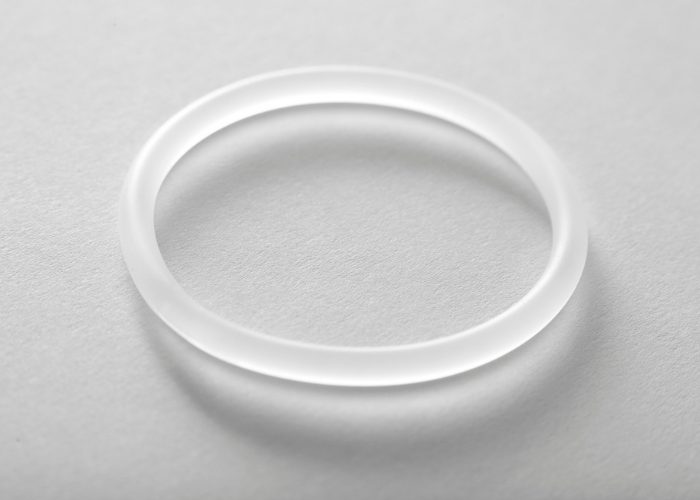
The vaginal ring or NuvaRing is a ring that you put inside your vagina that will prevent pregnancy. It’s an affordable solution to your contraception needs.
How effective is birth control in a vaginal ring?
- Perfect use: 99%
- Typical use: 91%
When you use the ring perfectly, it is 99% effective. However, putting it in correctly can be difficult, which means that it’s actually around 91% effective.
What is it?
The NuvaRing is a flexible ring that you insert into your vagina. It contains both estrogen and progestin, which it releases into your body.
How it works
In the same way that other hormonal types of birth control prevent pregnancy, the hormones inside the ring do the work here. The estrogen and progestin stop women from ovulating, which means that there is no egg to fertilize.
Side effects
The birth control side effects include headaches, bleeding between periods, sore breasts, and sickness.
How long does it take to work?
The ring is effective right away if you insert it within five days of starting your period. If you insert it at another time, it takes seven days to become effective.
How much does it cost?
Between $0 and $200 per month.
Sponge

The contraceptive sponge that covers your cervix and also has spermicide on it. It is a relatively cost-effective birth control option.
How effective is the birth control sponge?
- Perfect use: 91%
- Typical use: 76-88%
How effective is birth control in the form of a sponge? If you use the sponge perfectly, it is around 91% effective at preventing pregnancy, according to Planned Parenthood.[7] However, inserting it correctly can be hard, making it more like 76-88% effective.
What is it?
The sponge is a flexible round piece of soft plastic. You need to insert it deep inside your vagina each time that you have sex.
How it works
Aside from physically blocking sperm from reaching your uterus, it also has spermicide, i.e. a chemical that kills sperm, on them.
Side effects
Spermicide contains Nonoxynol-9, a chemical to which some people are sensitive. If you have a reaction to this chemical, it could increase your risk of STDs and cause pain.
How long does it take to work?
The sponge works immediately. You need to put it in before you have sex. However, making sure that it’s in correctly is essential.
How much does it cost?
Around $15 for three sponges (which can only be used once).
IUD
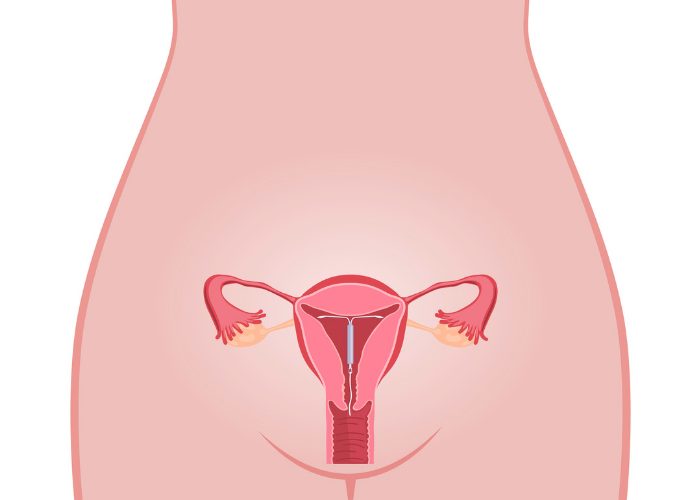
Also known as the coil, an IUD is a device that is inserted inside the vagina. After it has been fitted, it can protect you from unwanted pregnancies for a matter of years.
How effective is birth control in the IUD form?
- All use: 99%
How effective is birth control when it comes in IUD form? The short answer is very. Since there is no way that an IUD can be used incorrectly, the contraception is always 99% effective.
What is it?
The IUD (or Intrauterine Device) is a flexible plastic t-shaped device. To use it, you need to get it inserted into your vagina by a medical professional.
How it works
There are different types of IUD and how each works depends on the brand. Non-hormonal devices stop pregnancy by physically blocking the entrance to the uterus. However, hormonal devices will also use progestin to prevent ovulation.
Side effects
You may experience some pain when the contraception is first inserted. Other side effects include cramping, bleeding between periods, back pain, and worse menstrual pain than usual.
How long does it take to work?
How long the IUD takes to work depends on which brand you happen to use. You should consult with your doctor when you have the device fitted.
How much does it cost?
Between $0 and $1300 every three to five years.
Withdrawal / Pull-Out Method

One of the most holistic types of birth control is the withdrawal or pull out method. Despite being an easy option, this is one of the least effective methods.
How effective is the pull-out method?
- Perfect use: 96%
- Typical use: 78%
How effective is birth control when you pull out? Should you use the pull-out method correctly (i.e. perfectly), it is 96% effective, according to Planned Parenthood.[8] However, since pulling out can be hard to get right, it’s actually around 78% effective.
What is it?
Unlike other types of birth control, you don’t need to buy anything to use this contraception. Instead, the man should pull his penis out of the woman before he ejaculates to make sure that no sperm enters her cervix. It is advised that you use another form of contraception, like condoms, when employing this technique.
How it works
Since the man does not ejaculate inside the woman, this technique works by preventing sperm from ever entering the woman. The idea is to keep the sperm away from the uterus completely, which means that no egg can be fertilized by it.
Side effects
Since there are no hormones involved in this method, there are no birth control side effects here.
How long does it take to work?
You can use the pull-out method right away when you have sex. However, when we ask how effective is birth control of this nature, the answer is not very. Around 22 in every 100 women will get pregnant.
How much does it cost?
Nothing.
Rhythm Method / Fertility Awareness Method (FAM)
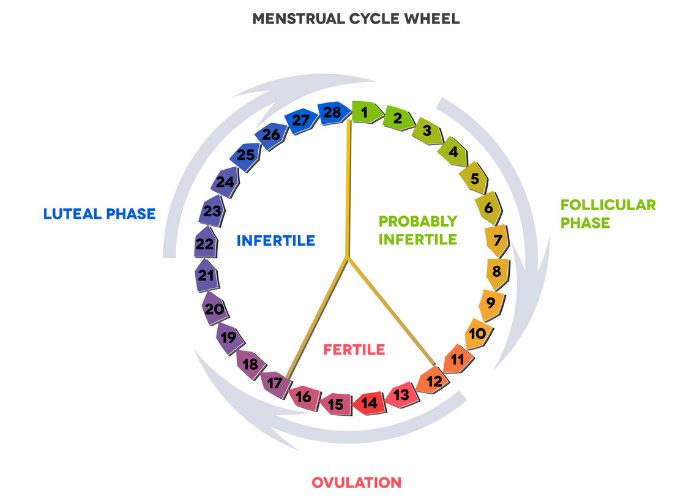
Sometimes called the rhythm method, the family awareness method (FAM) is a natural way in which you can prevent pregnancy. It is one of the non-hormonal types of birth control and is a free option.
How effective is birth control through FAM?
- All use: 76-88%
How effective is birth control using the family awareness method (FAM)? The truth is that it depends on what type of method you actually use. There are different ways to test when you are fertile. This type of birth control is around 76-88% effective, according to statistics from Planned Parenthood.[9]
What is it?
This method means that you have to track your menstrual cycle and work out when your most fertile days are. You can use a calendar or an app to help you figure it out.
How it works
There is a variety of ways in which you can determine when your fertile days are. Methods include the temperature method, the cervical mucus method, and the calendar method. Needless to say, some are more effective than others.
Side effects
The spermicide in the sponge may irritate some people. The risk of toxic shock syndrome (TSS) may also be higher for users. In order to increase its effectiveness, you can consider using different forms, like a condom, simultaneously. If you choose to do so, make sure to read up here about the risks of this additional form of contraception as well.
How long does it take to work?
You can start using this method right away and, when you’re not on your fertile days, it works right away.
How much does it cost?
Nothing apart from the initial cost, although you may have to pay for apps or equipment that supports this method.
3 Tips For Choosing the Best Birth Control For You
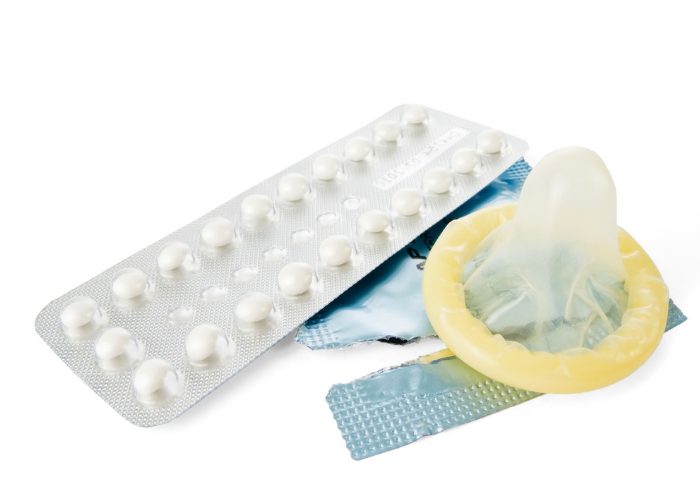
Now that you’ve learned all about the types of birth control out there, it could be time to choose the form that is right for you. Before you do so, here are three tips that will help you make the most sensible and informed decision for you and your lifestyle.
1. Read about the side effects first
Before you choose the types of birth control that suit you, you should think about the side effects. Consider how they will impact your lifestyle. For example, if you are already prone to regular headaches, choosing a form of contraception that has these side effects may not be the most ideal choicefor you. Take the time to research and read about the contraception first.
2. Consider your current lifestyle
There are numerous factors that you should think about when choosing the types of birth control you wish to use. For instance, you should consider whether you have a regular sexual partner and therefore need constant protection. You should also think about whether you can make a regular commitment to your contraception. Put simply, will you remember to take the pill each day? If the answer is no, you should pick another option. Another factor to mull over is the cost – does you budget allow for more costly forms of protection? Will you share this cost with your partner? There are no shortage of considerations to make before making a decision, but you shouldn’t feel rushed or pressured in the lead up to make it.
3. Consult with your regular doctor
Needless to say, your doctor knows your medical history better than anybody else. When you’re in the process of looking into the types of birth control available, you may want to book an appointment with them. Ask the question: How effective is birth control? They should be able to point you in the right direction and give you some sound advice.
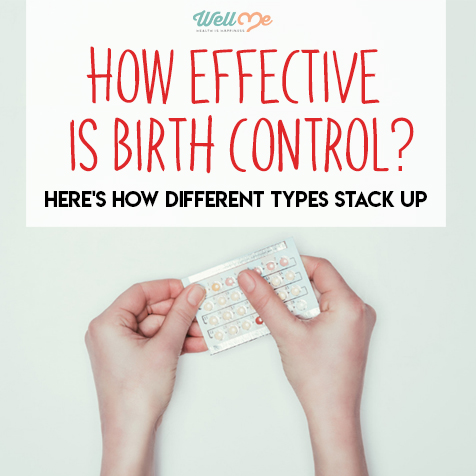
Conclusion
At first glance, the many different types of birth control may seem overwhelming and confusing. Luckily, choosing the right contraception for you doesn’t have to be an impossible task. Once that you’ve read our in-depth guide and understand more about each of the options as well as the birth control side effects, you should be well-informed. There are many choices out there! Take a moment to weigh up the options and select a form of birth control that fits both your lifestyle and your health.

Share this Image On Your Site
References
- [1] https://www.cdc.gov/nchs/data/nhsr/nhsr060.pdf
- [2] https://www.nhs.uk/conditions/contraception/how-effective-contraception
- [3] https://www.cdc.gov/nchs/data/nhsr/nhsr060.pdf
- [4] https://www.plannedparenthood.org/learn/birth-control/birth-control-pill/how-effective-is-the-birth-control-pill
- [5] https://www.plannedparenthood.org/learn/birth-control/condom/how-effective-are-condoms
- [6] https://www.plannedparenthood.org/learn/birth-control/birth-control-shot/how-effective-is-the-birth-control-shot
- [7] https://www.plannedparenthood.org/learn/birth-control/birth-control-sponge/how-effective-sponge
- [8] https://www.plannedparenthood.org/learn/birth-control/withdrawal-pull-out-method/how-effective-is-withdrawal-method-pulling-out
- [9] https://www.plannedparenthood.org/learn/birth-control/fertility-awareness








